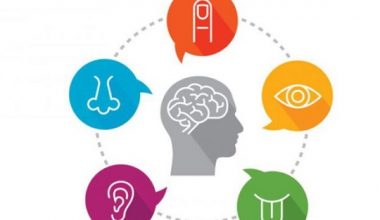When I first discovered lifestyle marketing, I was amazed by how profoundly a business could connect with its consumers. It was more than just selling a commodity; it was about selling an identity and a way of life. As someone who has used a variety of marketing methods over the years, I’ve witnessed directly how lifestyle marketing can change a brand’s impression and involvement. In this post, we’ll look at the complexities of lifestyle marketing, its techniques, and the advantages it provides to brands.
What is Lifestyle Marketing?
Lifestyle marketing is the process of matching a brand with its target audience’s interests, attitudes, and objectives. It’s all about integrating the brand into the consumer’s daily life, making it an essential part of their identity and habits. This technique goes beyond typical advertising by emphasizing ideals and experiences that resonate with the target demographic.
Approximately 88% of buyers want to be associated with a business that promotes environmental sustainability and ethical behavior. That is why most lifestyle companies take a gentle approach to ensuring a warm reception from their target population.
Traditional marketing methods encouraged people to buy more products from them.
Furthermore, another Accenture survey discovered that 63% of consumers prefer to buy from companies that share their beliefs and values. These figures emphasize the importance of incorporating lifestyle marketing into your business strategy.
On the other hand, modern lifestyle marketing focuses on creating the ideal lifestyle that its target audience seeks with the help of the brand. Nike and Adidas, for example, encourage people to maintain healthy lifestyles by wearing beautiful clothing.
The following are some of the key points covered by lifestyle marketing:
- Who is their target audience?
- What is the ideal lifestyle that they want?
- What are the most effective methods for communicating their way of life?
- What type of experiences will their brand offer?
Step-by-Step Guide for Implementing Lifestyle Marketing
Implementing lifestyle marketing entails connecting with your audience on a deeper level and aligning your brand with their beliefs and interests, in addition to advertising items. Here’s a step-by-step approach for successfully implementing lifestyle marketing for your brand.
Step #1. Determine Your Target Audience
Understanding your target audience is essential for lifestyle marketing. Conduct rigorous research to learn more about their demographics, psychographics, hobbies, and behaviors. Tools such as Google Analytics, social media analytics, and client surveys are quite useful in this process.
- Market Research: Use a variety of research approaches to understand your target audience. Surveys and focus groups can provide qualitative information, whereas analytics tools provide quantitative data.
- Customer Personas: Create detailed personas to reflect your ideal customers. Include details such as age, gender, location, income, interests, and lifestyle preferences.
Step #2. Determine Your Brand’s Lifestyle
Once you’ve identified your target demographic, the following stage is to define the lifestyle your brand represents. This includes clearly describing your brand’s beliefs, mission, and lifestyle. Your brand should represent something important that your target audience can identify with.
- Brand Values: Clearly state what your brand stands for. Do you promote sustainability, innovation, luxury, or wellness? Your target audience’s values should be similar to your own.
- Mission Statement: Create a mission statement that articulates your brand’s purpose and the lifestyle it promotes. This will help you focus your marketing efforts and assure consistency.
Step #3. Create Authentic Content
Content is king in lifestyle marketing. Create material that speaks to your audience’s interests and values. This includes blog entries, social media updates, videos, and other content. The idea is to be real and relatable. For example, if your brand supports a healthy lifestyle, offer advice on diet, workout routines, and wellness.
- Storytelling: Use storytelling to emotionally engage your audience. Share your brand’s journey, customer anecdotes, and experiences that demonstrate your beliefs.
- Visual Content: High-quality photos and videos are required. Use images to illustrate your brand’s story and demonstrate the lifestyle you advocate.
Step #4. Leverage Influencers
Influencers who represent the lifestyle that your brand promotes might be effective partners. They have built trust with their audience and can truly promote your brand. Choose influencers whose ideals are similar to yours for real endorsements.
- Influencer Selection: Find influencers who match your brand’s values and have a loyal following. Because of their personal relationship with their audience, micro-influencers are frequently more effective than celebrities.
- Collaborations: Collaborate with influencers to generate material that promotes your business in a natural and relatable manner. This could contain product reviews, lifestyle advice, or behind-the-scenes information.
Step #5. Engage with Social Media
Social media is an essential tool for lifestyle marketing. Engage your audience by posting useful material, reacting to comments, and building a community. Instagram, Facebook, and TikTok are great channels for showcasing your brand’s lifestyle through graphics and tales.
- Content Calendar: Plan and plan your social media updates to maintain consistency. Use a variety of content kinds, including photographs, videos, tales, and live sessions.
- Community Engagement: Respond to comments and communications quickly. Encourage user-generated content and provide your audience opportunity to interact with your brand.
Step #6. Host Events and Experiences
Hosting events and experiences that reflect your brand’s lifestyle can help you build deep emotional connections with your target audience. This might include everything from fitness courses and cooking lessons to virtual webinars and live Q&A sessions.
- Event Planning: Create events that embody your brand’s values and lifestyle. Ensure that the experiences you provide are relevant and beneficial to your target audience.
- Participation and Promotion: Promote your events through numerous means and urge attendees to participate. Share highlights and testimonials from previous events to increase interest.
Step #7. Monitor and adapt
Continuously monitor the effectiveness of your lifestyle marketing activities. Use analytics tools to monitor engagement, reach, and conversion rates. To remain relevant and effective, alter your strategy in response to feedback and data.
- Analytics: Conduct regular reviews of analytics such as likes, shares, comments, and click-through rates. Collect data using tools like as Google Analytics, social media insights, and CRM platforms.
- Feedback: Gather feedback from your target audience via surveys, social media polls, and direct contacts. Use the feedback to improve your content and strategy.
By following these steps, you can create a successful lifestyle marketing strategy that not only advertises your products or services but also builds a strong relationship with your target demographic. This technique will promote brand loyalty and long-term success.
Benefits of Lifestyle Marketing
#1. Enhanced Brand Loyalty
Lifestyle marketing builds a closer connection with customers, resulting in enhanced brand loyalty. When customers consider your brand as an extension of their identity, they are more inclined to stick with it over time.
#2. Increased Engagement
Lifestyle marketing naturally increases engagement by matching the interests and values of your audience. Consumers are more likely to interact with your brand when they see authentic content and relevant interactions.
#3. Increased Conversion Rates
When customers form a personal connection with your brand, they are more likely to make a purchase. Lifestyle marketing fosters a sense of belonging and trust, which can greatly increase conversion rates.
#4. Competitive Advantage
Brands that successfully use lifestyle marketing can set themselves apart from the competition. This strategy allows you to stand out in a competitive market by developing a distinctive and appealing brand identity.
#5. Long-term Growth
Lifestyle marketing adds to long-term brand growth by cultivating loyalty and developing strong relationships. Loyal consumers are not just repeat shoppers, but also brand champions who can refer new customers through word of mouth.
Real-World Examples of Effective Lifestyle Marketing
#1. GoPro
GoPro’s marketing strategy focuses on the adventurous lifestyle that their cameras enable. They distribute user-generated material that highlights adventurous excursions and extreme sports, effectively promoting their product as a must-have for adventure aficionados.
#2. Mark and Spencer
With lifestyle marketing, the British multinational retailer has encouraged its customers to live a more luxurious lifestyle by introducing things such as linen skirts and blouses into their lives. It represents their brand value while also meeting the changing needs of their target audience. They typically engage with their audience by offering fashion tips on their blogs and websites.
Everything they do, from product quality to brand image, is focused on offering an unforgettable customer experience at all costs.
#3. Marlboro
Marlboro, an American cigarette brand that was declared the most popular cigarette brand based on 2017 sales figures, launched the ‘Mild as May’ campaign to woo female customers. It featured a picture of a chic woman smoking cigarettes in an extremely fashionable manner.
#4. Harley Davidson
The American motorcycle company has always attempted to establish an emotional connection with its customers. It is an iconic part of American society, with its daring persona and devoted followers. They give their clients a personalized experience while staying true to their brand value.
As part of one of its initiatives themed “all for freedom and freedom for all,” it produced a series of short films in which bikers from around the world relate moments from diverse walks of life.
#5. Red Bull
Without a doubt, the best example of lifestyle marketing is Red Bull. This energy drink not only emphasizes its taste and caffeine content but also promotes the energetic lifestyle that its target population seeks. This brand’s Felix Baumgartner freefall from outer space clip drew the attention of many who had never heard of its energy drink.
#6. Burt’s Bees
This natural skincare brand represents many clients’ commitment to a healthy and environmentally friendly lifestyle. Its target consumers value organic products and want to incorporate them into their daily lives. As a result, they have supplied some context in their clients’ lives with the ‘Raise Burt’s campaign,’ showcasing how their products have made a big difference in their customers’ lives.
#7. Dove
Dove was fully aware that their target audience was predominantly female, ranging from supermodels to regular housewives. As a result, they created the Real Beauty campaign, which sought to increase women’s self-esteem. The idea was to express that all women are equally beautiful, regardless of age or skin color.
#8. Nike
Nike’s ‘Just Do It’ ad indicates that the business is about more than just selling sports shoes; it also promotes the idea that anyone, at any age, can become an athlete. Instagram has over 16 million posts with the hashtag “Just do it,” making it one of the companies with the most user-generated content (UGC) on social media platforms.
#9. Apple
Apple devices are more than simply gadgets; they have become a status symbol for many individuals. It’s all due to their customer-centric approach, which provides their consumers with a clean, inventive, and innovative technological environment. Furthermore, Apple intended the Mac to signify empowerment, with the commercial depicting the Mac as a tool for opposing conformity and forging originality.
Challenges that Different Brands Face on Their Way to Lifestyle Marketing
#1. Lose focus
Soft selling is employed in lifestyle marketing strategies; instead of utilizing a rigid process, they appeal to their audience by telling a story about their company. Due to this mild approach, many businesses have lost focus at times. The entire purpose of marketing is to sell, so if you are not selling, it is a waste of time.
#2. Competition
Lifestyle marketing promotes an overly broad lifestyle, increasing competitiveness in that area. A cosmetic brand, for example, will face intense competition from other cosmetic brands that sell comparable products. As a result, creating a lifestyle marketing strategy that differentiates you from your competitors is crucial.
#3. Maintaining authenticity
Consumers can quickly recognize inauthentic brands, therefore firms must be real in their lifestyle marketing activities. Undoubtedly, the present user base is tech-savvy, intelligent, and research-oriented, which results in many good changes.
For example, Louis Vuitton maintains its authenticity through its legacy, limited distribution, innovation, quality, and brand image. The brand’s focus on quality and craftsmanship, tight control over distribution networks, and exclusive collaborations all contribute to its luxury image and appeal to discerning customers.
#4. Keeping up with trends
To remain current and resonate with their target demographic, lifestyle firms must keep up with trends and change their marketing strategy accordingly. Consumer preferences and habits are continually changing, driven by technological, cultural, and societal standards. Brands that don’t stay up risk losing market share and becoming outdated.
Lifestyle brands may maintain their relevance and appeal to their audience by staying on top of trends and modifying their strategy accordingly, resulting in increased sales and revenue.
You can learn a lot from the popular lifestyle label – Patagonia’s honesty, ethics, and devotion to quality have helped it become one of the world’s best brands.
#5. Marketing and Sales Balancing
Lifestyle marketing should focus on building a strong brand image and engaging with customers, but brands must also generate sales and meet business objectives.
#6. Calculating ROI
Lifestyle marketing can be difficult to quantify in terms of ROI, therefore organizations must build measures to effectively assess the influence of their marketing activities on business outcomes.
Adidas employs data analytics to measure the effectiveness of its influencer marketing programs. Adidas can calculate its ROI by monitoring campaign engagement and revenue.
Examples of Brand Campaigns that Fail in Lifestyle Marketing
#1. Levi’s ‘hotness comes in all forms and sizes’ marketing campaign.
Levi’s attempted to popularize its new Curve ID jeans with the marketing campaign “Hotness comes in all shapes and sizes,” which was an excellent step to promote body positivity. However, the brand deviated from its motto by featuring what others termed slim models in its advertising campaign.
#2. Nike’s Oscar Pistorius advertisement
Oscar, a double amputee, and other athletes appeared in motion in one of Nike’s marketing ads, with the narrator referring to athletes’ bodies as weapons. “I am the bullet in the chamber,” Pistorius subsequently wrote in a caption. Because the same Olympian was later accused of murder with a firearm, Nike’s marketing campaign sparked widespread outrage.
#3. Airbnb’s Floating World Campaign
Airbnb launched a ‘floating world’ campaign with an image of a house floating on the water’s surface. This commercial was not detrimental, but its timing was. Unfortunately, the date of this marketing campaign coincided with Hurricane Harvey’s damage in Houston, so it failed.
Why Does Lifestyle Marketing Work?
Lifestyle marketing is powerful because it fosters stronger emotional ties with customers, resulting in higher engagement, loyalty, and conversion rates.
Can Small Businesses Utilize Lifestyle Marketing?
Yes, small businesses can benefit from lifestyle marketing by focusing on specific audiences, providing relatable content, and developing strong community relationships.
Key Takeaways
- Lifestyle marketing entails connecting your brand to the interests and values of your target demographic.
- Authentic content and meaningful relationships are critical for successful lifestyle marketing.
- Influencer collaborations can help to spread your brand’s message and reach.
- Engaging on social media and hosting events helps to build a strong community around your company.
- Continuous monitoring and adjustments are necessary to sustain relevance and effectiveness.
Conclusion
Understanding lifestyle marketing is critical for brands seeking to establish deeper connections with their target demographic. By matching your brand with your customers’ interests and values, you can build loyalty, enhance engagement, and promote long-term growth. What tactics have you found useful for communicating with your target audience? Please share your experiences and help us continue the discourse!
Related Articles
- Public Relations vs. Marketing: How They Differ and When to Use Each
- Branding Sentiment Analysis: Everything You Should Know
- How To Find YouTube Influencers for Your Brand: 7+ Proven Ways
- PERSONAL BRAND ATTRIBUTES: What They Are, How to Define Yours and Enhance Them
- BRAND PERSONALITY: How To Give Your Brand a Memorable Personality That Connects






